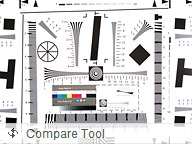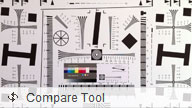HTC Desire Eye review: Undercover flagship
Undercover flagship
2 x 13MP camera with true-tone flash
The HTC Desire Eye introduces a dual setup for the rear and front camera where both snappers have similar guts. To begin with, both their sensors offer 13 MP resolution, auto-focus and a true-tone (dual) LED flash. The front camera however has f/2.2 aperture and a much wider field of view, perfect for group selfies. The rear camera's aperture is wider at f/2.0, but the field of view is tighter.
The camera UI on the Desire Eye is identical to previous HTC devices and it's really easy to use and navigate. It offers HDR, Panorama, geo-tagging and image effects. The more advanced settings are hidden by default, but you can also control ISO, exposure compensation, white balance and a few other image adjustments.
A long press on the screen will enable Auto Exposure and Auto Focus lock. You can set the volume rocker to act as a zoom lever or a shutter key.
Image quality of the main camera on the back is equally good across the frame. The resolved detail is enough though it could have been better. Noise reduction smears the fine detail on a number of occasions. The processing is not as mature as some other cameraphones. The colors are accurate, so is the white balance.








HTC Desire Eye rear camera samples
The HDR mode of the HTC Desire Eye camera snaps a couple of photos with different exposures and then combines them into a single photo. It tends to expose for the highlights and then brightens up the shadows in the scene. This in turn produces images with nice and even exposure, and without a nasty overly-contrasted, exaggerated look.
HTC Desire Eye is capable of taking 360-degree panoramic shots, but those come with a quite low resolution. A 1080-degree pano sample spreads at 3300x665, which is quite disappointing. The quality and sticking process aren't something to write home about either.

A panoramic picture taken with the HTC Desire Eye rear snapper
The front camera offers a dedicated Selfie mode, where you can enable options such the Smile shutter or you can apply different levels of digital skin enhancement.
The image quality of the front 13MP snapper is different from what we saw on the samples taken with the rear 13MP shooter. The resolved detail is less, there is a considerable more noise, and the dynamic range is lower. The colors and white balance however are accurate, though slightly oversaturated.






HTC Desire Eye front camera samples
Photo quality comparison
Here's the HTC Desire Eye included in our photo quality comparison tool. The tool is designed to allow you the ultimate pixel-peeping experience and the option to challenge the smartphone to any of the many other shooters we've tested.



HTC Desire Eye in our photo compare tool
1080p video recording up to 60fps
The HTC Desire Eye offers 1080p video recording in up to 60fps, though there's also a 30fps mode for FullHD videos, and 120fps mode at 720p. The front-facing camera can also record 1080p videos.
The 1080p videos default at 30fps, and carry a bitrate of just under 20 Mbps. Framerate is indeed a constant 30fps throughout the video. Audio bitrate sits high at 192 Kbps and offers two channels (read: it's stereo).
The quality of the videos is on par with that of the still images. They come out with comparable sharpness, the same high noise levels, contrast and saturation that we saw in the still images, and the colors are also accurate. The dynamic range is lower though.
The 60fps mode is very similar to the 30fps, having the same 20 Mbps bitrate and dual channel audio at 192 Kbps. In this mode there's a slightly wider field of view, however, which means that you'll capture more in the frame, but it won't be as detailed. There's also a yellowish tint to the images.
60fps mode works just as advertised, however, in reality the videos have a constant frame rate of 50 frames per second. Nevertheless, the action in these videos is much smoother than on the standard 30fps ones, while file size is surprisingly not that much higher. The resolved detail however is noticeably less, and the dynamic range is poorer.
You can download a 1080p@30fps sample, as well as a 1080p@60fps sample taken directly from the device.
Finally, the 1080p videos at 30fps taken with the front snapper came out with the same bitrate as the one from the main camera, but the frame rate is lower, falling down to 26fps. The video quality is on par with the quality of the photos taken with the front camera - there is less detail, more noise and a wider field of view.
You can also download the untouched 1080p@30fps video sample taken with the front camera of the HTC Desire Eye.
Video quality comparison
In the video comparison tool you can face the HTC Desire Eye off against any of the other camcorders we've tested over the years.
Reader comments
- Skipper32Oner
- 03 Apr 2024
- Iix
Ten years later I find the specs to be solid only if HTC would get it together with software support along with better marketing strategy definitely can strive one last thing a successor with 5g sounds good enough for me
- Htc desire eye
- 11 Oct 2016
- ITj
Htc eye not internet 2g 3g 4g why?
- AnonD-590018
- 27 Sep 2016
- m1D
I have had this phone now for 10 month, I loved it, every single part about it. But now it has don't send error on camera and other apps can not even recognize that I have a camera. Can't decide to buy a new Eye or not, amazon won't take it back nor ...
















